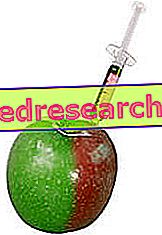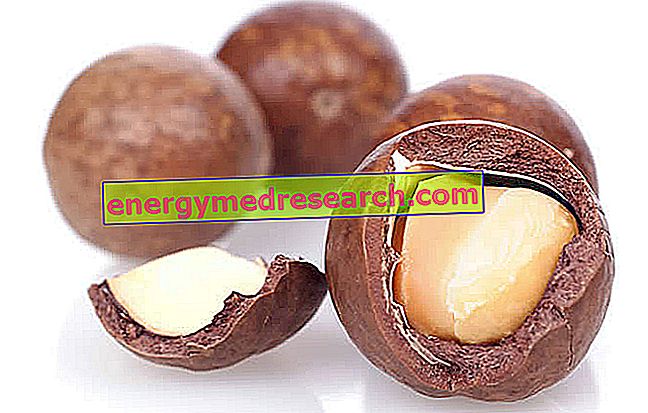
About Protein Pro - ProAction
PROTEIN PRO - PROACTION
Food supplement of pure egg albumin and vitamins
FORMAT
Pack of 725 grams Cocoa and vanilla flavor
COMPOSITION
Egg whites; Aroma; Guar; xanthan; Sweetener: sucralose; C vitamin; B vitamins
Media Analysis (Cocoa taste) | Per 100 gr | per serving (= 30 g) | % RDA |
Energy value | 380.9 Kcal / 1600 Kj | 114.7 Kcal / 480 Kj | - |
Protein | 80.9 g | 24.27 g | - |
Carbohydrates | 1 g | 0.3 g | - |
Grassi | 5 g | 1.5 g | - |
| Folic acid | 200 mcg | 60 mcg | 30% |
| Pantothenate acid | 6 mg | 1.8 mg | 30% |
| Biotin | 150 mcg | 45 mcg | 30% |
| Vitamin PP | 18 mg | 5.4 mg | 30% |
| Vitamin B1 | 1.4 mg | 0.42 mg | 30% |
| Vitamin B2 | 1.6 mg | 0.48 mg | 30% |
| Vitamin B6 | 2 mg | 0.6 mg | 30% |
| Vitamin B12 | 1 mcg | 0.3 mcg | 30% |
| C vitamin | 60 mg | 18 mg | 30% |
| Vitamin E | 10 mg | 3 mg | 30% |
| Typical amino acid profile | Per 100 gr |
| Alanine | 3.79 |
| Arginine | 3:57 |
| Aspartic acid | 6.67 |
| Cysteine | 1.69 |
| Glutamic acid | 8.71 |
| Glycine | 2:30 |
| Histidine | 1:48 |
isoleucine | 3.71 |
Leucine | 5:53 |
| Lysine | 4:47 |
| Methionine | 2:26 |
| Phenylalanine | 3.83 |
| Proline | 2.5 |
| Serina | 4:52 |
| threonine | 2.99 |
| Tryptophan | 0.80 |
| Tyrosine | 2:55 |
| Valine | 4:17 |
Product features Protein Pro - ProAction
Product features: the product in question offers very pure egg white proteins, concentrated for about 80%, dried, mixed and flavored, with the addition of a vitamin mixture and sweetened with sucralose.
Egg protein : the egg, and in particular the egg white, are an excellent source of proteins of very high biological value and particularly complete as regards the amino acid profile. Naturally rich in branched chain amino acids and arginine, the powdered proteins extracted from the albumen guarantee very high protein concentrations, even higher than 80%, with a percentage of fat that hardly reaches 1%. Although the amino acid profile is very close to that of milk protein whey, with a decidedly higher share of arginine, the kinetic properties of digestion and absorption seem closer to those of caseins. Compared to 97% absorption capacity, therefore to a very high bioavailability of absorbable amino acids that can be used for plastic and reconstructive purposes, ovalbumin and ovo globulins have rather slow gastric emptying times, which guarantee a continuous and gradual supply of amino acids .
Several studies seem to demonstrate how this absorption pattern can translate into a series of advantages for the athlete during sports performance, significantly reducing muscle proteolysis and saving tissue amino acids from inevitable oxidation: a feature that seems to be confirmed by a marked reduction in markers of muscle damage, such as lactic dehydrogenase or creatine kinase. In addition to this effect, which would be guaranteed by the pre-workout administration of these proteins, the various studies also associate protein integration:
- a potential immunoprotective effect, which would protect the athlete from the physiological immune decline following periods of intense training and which would be explained by some amino acids, such as glutamine;
- a potential energy effect: associated both with gluconeogenic amino acids, probably responsible for the increased insulin secretion, and with BCAAs, which would represent an important energy source especially during endurance sports;
- a potential plastic and reconstructive effect: guaranteed by the increased availability of substrates necessary for protein synthesis;
- a potential anabolic effect: explained in part thanks to the inducing action on beta cells, concretized in the increased insulin secretion, and partly thanks to the modulation of the intracellular signal, with activation of a series of transcription factors, such as mTor, capable of directly promote protein synthesis.
Suggested use by the company - Protein Pro - ProAction
Mix 3 scoops = 30 g of product with 100 - 150 ml of water or other liquid of your choice. Take one serving a day away from main meals and at least one hour before training or competitions.
Use in sports - Protein Pro - ProAction
Several are the supplementary protocols proposed by the various studies present in the literature, elaborated also according to the objectives set by the athletes. However, in order for supplementation to produce some real benefit, limiting potential side effects, it is necessary to establish the protein content to be supplemented, correlating it with the type of physical activity performed and the athlete's physiological, nutritional and dietary status. In particular, the egg proteins, given the peculiar amino acid profile and the absorption spectrum very similar to that of casein, adapt perfectly both to pre-workout administration, guaranteeing protection of the muscular structures, and to the subsequent recovery phase, where guaranteeing a gradual and prolonged release of amino acids, they can sustain the subsequent anabolic phase. It is very important, in both cases, to associate at least one additional carbohydrate source with the protein supplement, preferably:
low glycemic index in pre-workout, so as to ensure a gradual release of energy;
medium-high glycemic index in the post work out, to stimulate insulin secretion, important both to facilitate glycogen resynthesis and to support protein synthesis.
Sinergie - Protein Pro - ProAction
Proteins + antioxidants: the combination of antioxidants seems to enhance the protective effect of proteins during intense physical activity.
Protein + CHO: seems to be the most effective combination ever. In the pre-race, properly combined and choosing the most suitable source, carbohydrates can sustain the performance and improve the energy properties of the muscle; in post-work out, on the other hand, they can optimize the recovery and growth process.
Protein + Creatine: always combined with carbohydrates, taken in the post work out, they seem to improve the increase in lean mass, even if not all the studies agree.
Side Effects Protein Pro - ProAction
Known are the long-term side effects of a diet too rich in proteins or amino acids; renal damage, dehydration induced by increased urinary secretion, hepatic or renal distress, lipidemic alterations and related associated pathologies, tissue acidosis and bone demineralization, are just some of the consequences of an unbalanced diet over time. Among the harmful effects derived from a diet too rich in proteins, there is certainly also the increase of adipose tissue induced by the complex metabolic crossroads responsible for the energy-functional coordination of the organism.
Precautions for use Protein Pro - ProAction
The product is contraindicated in cases of renal or hepatic disease, cardiovascular disease and / or hypertension, allergies and autoimmune diseases, during pregnancy, during breastfeeding, under 12 years and for adolescents not yet trained.
In the event of prolonged use (over 6/8 weeks), medical advice is required.
This article, elaborated on the critical re-reading of scientific articles, university texts and common practice, is for informational purposes only and is therefore not a medical prescription. It is therefore always necessary to consult your doctor, nutritionist or pharmacist before starting to use any kind of supplement . More information on the critical analysis of Protein Pro - ProAction.
| BIBLIOGRAPHY |
Int J Sport Nutr Exerc Metab. 2004 Jun; 14 (3): 255-71. Effect of an amino acid, protein, and carbohydrate mixture on net muscle protein balance after resistance exercise.Borsheim E, Aarsland A, Wolfe RR. Prosthetic synthesis levels increase and associate post-workout protein with CHO. Diabetes Metab Res Rev. 2007 Jul; 23 (5): 378-85. Slow versus fast proteins in the stimulation of beta-cell response and activation of the entero-insular axis in type 2 diabetes.Tessari P, Kiwanuka E, Cristini M, Zaramella M, Enslen M, Zurlo C, Garcia-Rodenas C. Effects of a combined essential amino acids / carbohydrate supplementation on muscle mass, architecture and maximal strength following heavy-load training. Vieillevoye S, Poortmans JR, Duchateau J, Carpentier A. Eur J Appl Physiol. 2010 Jun 3. [Epub ahead of print] Effects of whey protein isolated on body composition, lipids, insulin and glucose in overweight and obese individuals. Pal S, Ellis V, Dhaliwal S. Br J Nutr. 2010 Apr 9: 1-8. [Epub ahead of print] Effect of protein / essential amino acids and resistance training on skeletal muscle hypertrophy: A case for whey protein. Hulmi JJ, Lockwood CM, Stout JR. Nutr Metab (Lond). 2010 Jun 17; 7 (1): 51. [Epub ahead of print] Timing protein intake increases energy expenditure 24 h after resistance training. Hackney KJ, Bruenger AJ, Lemmer JT. Med Sci Sports Exerc. 2010 May; 42 (5): 998-1003. Post-exercise carbohydrate plus whey protein hydrolysates supplementation increases skeletal muscle glycogen level in rats. Morifuji M, Kanda A, Koga J, Kawanaka K, Higuchi M. Amino Acids. 2010 Apr; 38 (4): 1109-15. Epub 2009 Jul 11. The effects of creatine and whey protein supplementation on body composition in men aged 48 to 72 years during resistance training. Eliot KA, Knehans AW, Bemben DA, Witten MS, Carter J, Bemben MG. J Nutr Health Aging. 2008 Mar; 12 (3): 208-12. Supplementation with a whey protein hydrolysate enhances recovery of muscle force-generating capacity following eccentric exercise. Buckley JD, Thomson RL, Coates AM, Howe PR, DeNichilo MO, Rowney MK. J Sci Med Sport. 2010 Jan; 13 (1): 178-81. Epub 2008 Sep 2 .. Effect of protein ingestion on energy expenditure and substrate utilization after exercise in middle-aged women. Benton MJ, Swan PD. Int J Sport Nutr Exerc Metab. 2007 Dec; 17 (6): 544-55. Impact of differing protein sources and a creatine containing nutritional formula after 12 weeks of resistance training. Kerksick CM, Rasmussen C, Lancaster S, Starks M, Smith P, Melton C, Greenwood M, Almada A, Kreider R. Nutrition. 2007 Sep; 23 (9): 647-56. Effects of resistance training and protein supplementation on bone turnover in young adult women. Mullins NM, Sinning WE. Nutr Metab (Lond). 2005 Aug 17; 2: 19. J Trop Pediatr. 2006 Feb; 52 (1): 34-8. Epub 2005 Jul 13. Moreno YF, Sgarbieri VC, da Silva MN, Toro AA, Vilela MM. Milk whey protein decreases oxygen free radical production in a murine model of chronic iron-overload cardiomyopathy. Bartfay WJ, Davis MT, Medves JM, Lugowski S. Can J Cardiol. 2003 Sep; 19 (10): 1163-8. Effects of leucine and whey protein supplementation during eight weeks of unilateral resistance training. Coburn JW, Housh DJ, Housh TJ, Malek MH, Beck TW, Cramer JT, Johnson GO, Donlin PE. J Strength Cond Res. 2006 May; 20 (2): 284-91. Systemic indices of skeletal muscle damage and recovery of muscle function after exercise: effect of combined carbohydrate-protein ingestion. Betts JA, Toone RJ, Stokes KA, Thompson D. Appl Physiol Nutr Metab. 2009 Aug; 34 (4): 773-84. nt J Sport Nutr Exerc Metab. 2009 Feb; 19 (1): 79-96. Cornish SM, Candow DG, Jantz NT, Chilibeck PD, Little JP, Forbes S, Abeysekara S, Zello GA. College of Kinesiology, University of Saskatchewan, Saskatoon, SK, Canada. utr Res. 2008 Oct; 28 (10): 651-8. Whey protein ingestion in elderly persons results in greater muscle protein than ingestion of its constituent essential amino acid content.Katsanos CS, Chinkes DL, Paddon-Jones D, Zhang XJ, Aarsland A, Wolfe RR. Ingestion of whey hydrolysate, casein, or soy protein isolate: effects on mixed muscle protein synthesis at rest and following resistance exercise in young men. Tang JE, Moore DR, Kujbida GW, Tarnopolsky MA, Phillips SM. J Appl Physiol. 2009 Sep; 107 (3): 987-92. Epub 2009 Jul 9. The effect of bovine whey protein on ectopic bone formation in young growing rats. Kelly O, Cusack S, Cashman KD. Br J Nutr. 2003 Sep; 90 (3): 557-64. Bovine colostrum supplementation during endurance running training improves recovery, but not performance. Buckley JD, Abbott MJ, Brinkworth GD, Whyte PB. J Sci Med Sport. 2002 Jun; 5 (2): 65-79. Effect of bovine colostrum on anaerobic exercise performance and plasma insulin-like growth factor I. Buckley JD, Brinkworth GD, Abbott MJ. J Sports Sci. 2003 Jul; 21 (7): 577-88. |



